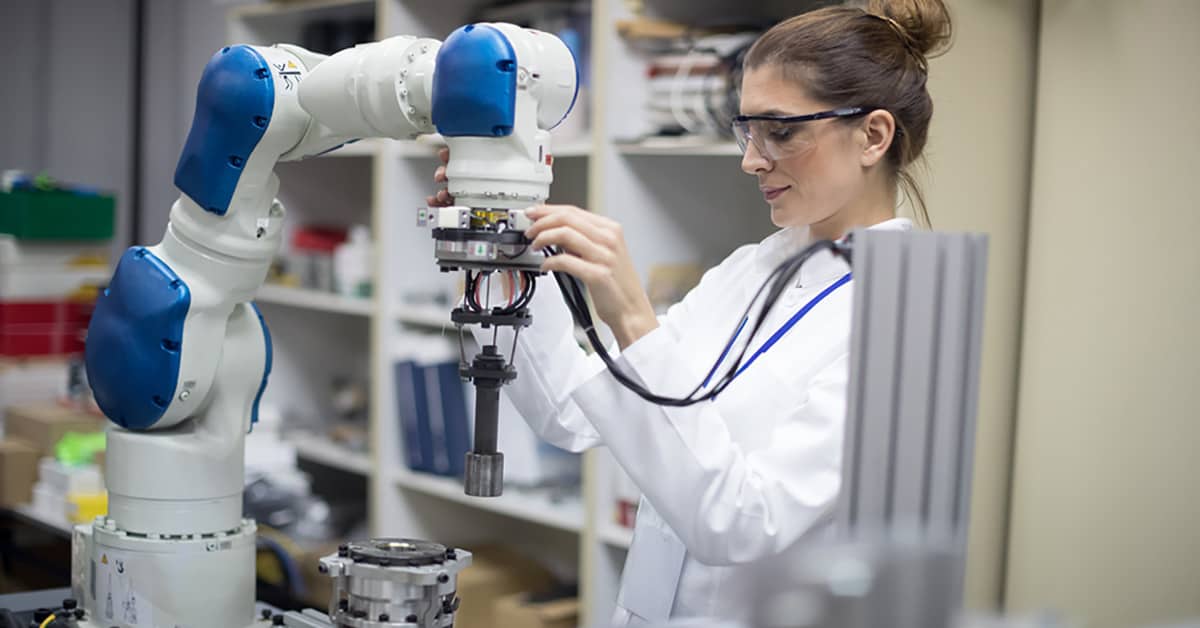
As the world advances with growing technologies, more people are becoming fearful about losing their jobs to robotics and automation technologies. However, experts have pressed over the need and potential of collaborative technologies, say cobots or collaborative robots.
Collaborative robots are a relatively new invention in the robotics industry, but already, there are several different kinds. Their instant success in a wide range of industries has spurred rapid product innovation, resulting in four major types of collaborative robots. Moreover, the different types of collaborative robots are defined by their safety and programming features. They are also categorized by the way in which they avoid potentially dangerous encounters with human workers. Each type of collaborative robot deploys unique methods and technologies to maintain a safe operating space – this difference defines which environments they’re best suited for.
According to Robotics Online, here are the four types of collaborative robots that are defined as safety monitored stop, speed and separation, power and force limiting, and hand guiding.
Safety Monitored Stop – Collaborative robots defined as safety monitored stop are intended for applications that have minimal interaction between the robot and human workers. Typically, these types of collaborative robots actually leverage an industrial robot with a series of sensors that stop robot operation when a human enters the work envelope.
Speed and Separation – These types of collaborative robots are similar to safety monitored stop collaborative robots in the fact that they leverage an industrial robot. However, speed and separation collaborative robots use more advanced vision systems to slow operations down when a human worker approaches and stops operation altogether when a worker is too close to the robot.
Power and Force Limiting – These types of collaborative robots are built with rounded corners and a series of intelligent collision sensors to quickly detect contact with a human worker and stop operation. These collaborative robots, which use collaborative robot arms, also feature force limitations to ensure any collisions are unlikely to result in injury.
Hand Guiding – These collaborative robots are equipped with a hand-guided device by which an operator directly controls the motion of the robot during the automatic mode. While in automatic mode, the robot performing hand-guiding collaboration responds only to the operator’s direct control input. This allows the robot, for example, to support the weight of a heavy workpiece while the operator manipulates it into position, thereby reducing the operator’s risk of repetitive-stress injury. Similar capabilities can be used to “teach” or program a robot, but properly speaking, hand guiding as a collaborative operation occurs while the robot is in automatic mode, during normal production, whereas programming is not done in automatic mode nor used during production.
According to a market report, the Asia-Pacific collaborative robots market will grow at a 2020-2026 CAGR of 45.46% with an addressable cumulative market value of US$13.17 billion over the next 7 years in terms of cobots hardware. This region is expected to become the largest cobots market in the forecast period.
Overcoming Industrial Challenges
As noted by Robotics and Automation News, even as cobots continue to become popular in the present scenario, there are still certain challenges that pose a hindrance to the implementation of these systems in major manufacturing plants. One of these is the requirement for fine dexterity, for instance for picking up and handling delicate or small parts.
Moreover, the ability to make quick decisions to facilitate smooth production processes is also important. It has been observed that in order to overcome these hurdles, market leaders are working towards creating robots that feature integrated vision systems and faster processors which would allow modern collaborative robots to work around the obstacle and adapt to a change in the environment, without simply stopping their action, as is the case with traditional robots.
Share This Article
Do the sharing thingy
About Author
More info about author